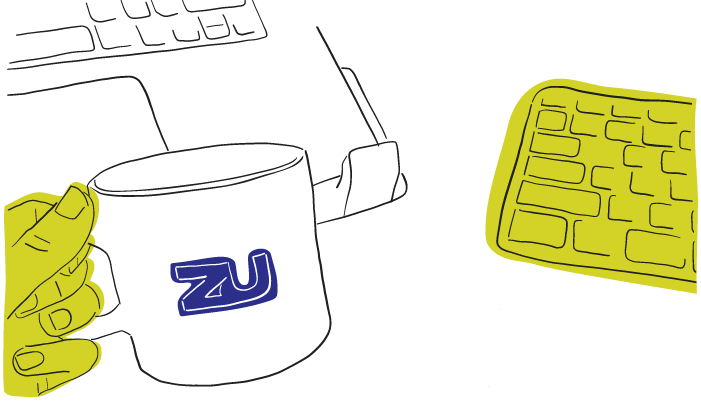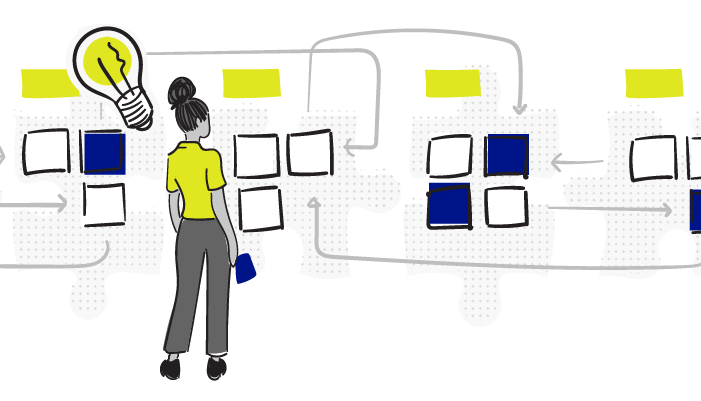

Leveraging technology in First Nations communities
Leveraging technology in First Nations communities

Albert
Jame
Chief Experience Officer,
Partner
Chief Experience Officer,
Partner
From talking with my friends who work in First Nations communities, it’s clear there is a building interest in better leveraging technology to engage members and deliver better services. By using technology, communities can connect with each other, other communities and access outside services to support their community. Technology can mean a lot of things - from printers to websites to software. There are simply too many technology trends to address in one blog post, but I have selected a few progressing digital technologies that seem to always come up in client meetings.
Before I start, I need to state that we’re not a typical software design firm at zu. Yes we have developers and consultants, but we are much more heavily rooted in the user experience than the average technology consultancy - meaning, we design our projects from the users out. We firmly believe that the best experiences will deliver the best business outcomes. This is the same philosophy that drives organizations like Apple, Amazon, and Uber, to name a few. It is through this customer-focused lens that we look at new technology, and its potential with the user.
Here’s what’s been on our minds:
Don’t think website. Think software.
Organizations are underutilizing their current website. It may be because websites have long been associated strictly with communications or branding, which tends to narrow the scope and overall usage. It’s time to fully realize the potential of what a real web strategy can unlock in your organization. This means looking at it from a software perspective, doing some proper business analysis and outlining all of the benefits that a more robust digital effort can have for your organization. Identifying which digital channels will be most effective for engaging with your key stakeholders helps focus a digital strategy. You should consider how your website and overall digital strategy can assist with investment attraction, human resources, online tools, member engagement, elections/voting, data collection/management, organizational efficiency, integration with other business systems, cultural pride, and more. A proper website strategy should force some of the best business strategy discussions that have been long overdue.
Social is the new normal. How have you adapted?
Traditional media is dying a slow death. From TV to radio to the telephone, communication preferences have changed, but many organizations have yet to take this seriously. From Facebook, Messenger, Twitter, and Instagram, to Snapchat and WhatsApp, these new channels have proven to be more effective in reaching younger demographics than traditional, yet we are still serving meat to vegetarians. First Nations communities need to consider these platforms as much more than marketing tools, as they can be cost effective tools to help emergency communications, educational material, crisis management and internal communications/operations. Most of these platforms are built for mobile devices, making it more likely that members will use them, as stats show that users today are more likely to access the Internet through a mobile device than a computer.
Getting into the game is tricky, and it’s changing all the time, but it’s time to take a serious look into how you best leverage these channels to engage a younger audience (aka: future voting members). Hint: it’s should be a part of your digital strategy (see above).
Mobile apps
This is a bit of a double-edged sword. Although mobile technology is changing the way society functions and affecting overall human behaviour, companies often jump into bed with the idea of launching an app without a full understanding of the realities. You need to ask yourself, ‘are we ready to commit valuable time and resources to produce a worthy app?’ As much as they can be game-changers to some organizations, most of them fall flat due to poor execution or fall behind due to the immense amount of time it takes to keep this technology up to date. In short, don’t build an app just for the sake of building an app, but start with trying to define the purpose or challenge. Most of the time, you’ll realize you may be able to offer a reasonable mobile experience through a very well put together mobile optimized website, that’s far better on the budget.
Internet of Things (IoT)
You may have heard this buzzword in the last year or so. In short, it’s the evolution of our surrounding objects being more intelligent by being connected (Wi-Fi or Bluetooth built in). From alarm systems (https://www.youtube.com/watch?v=xk4peDTC0fU), electronic wearables (watches), sprinkler systems, and scales, to coffee makers. Once mankind discovered the ability to put Wi-Fi into everyday objects, it skyrocketed our ability to control, diagnose, and interact with them through our devices. I’ve heard of one community using GPS to track service trucks and their routes (much to the chagrin of the drivers who love long coffee breaks). This is just an example of leveraging technology to improve service delivery. The opportunities are limitless.
Ok, so where do we start?
I realize that there’s no good time to address any of the above. Most communities, day to day, are fighting the good fight and are dealing with many outside distractions, preventing them from being proactive with technology. However, the right technology and proper implementation should be viewed as an investment into making things run smoother and your life easier. These are substantial project initiatives and commitments. That’s why it’s so important for the leaders of the organization to believe in their potential, rather than trying to sell these ideas up the ladder, which usually results in a less than desired experience.
Individually, technology trends can be reviewed one at a time, however, we recommend by starting with an encompassing digital strategy, where efforts can be aligned with organizational goals. We have a long history of integrating digital strategies into organizations whether it starts with a social media strategy, website, mobile app, or full digital transformation. And remember - take a long position on technology. Most organizations we work with are all fighting a long uphill battle with technology. So it’s important, at the beginning, to build this acceptance within your culture and get buy-in from the highest levels of management to ensure any chance of success.



